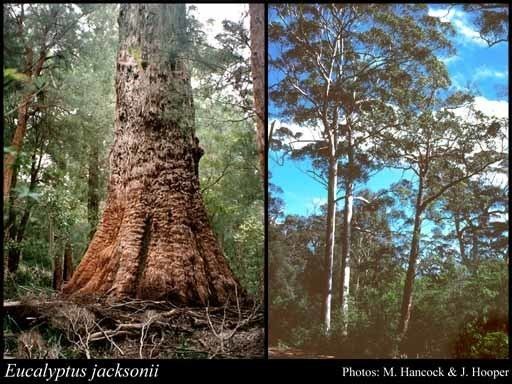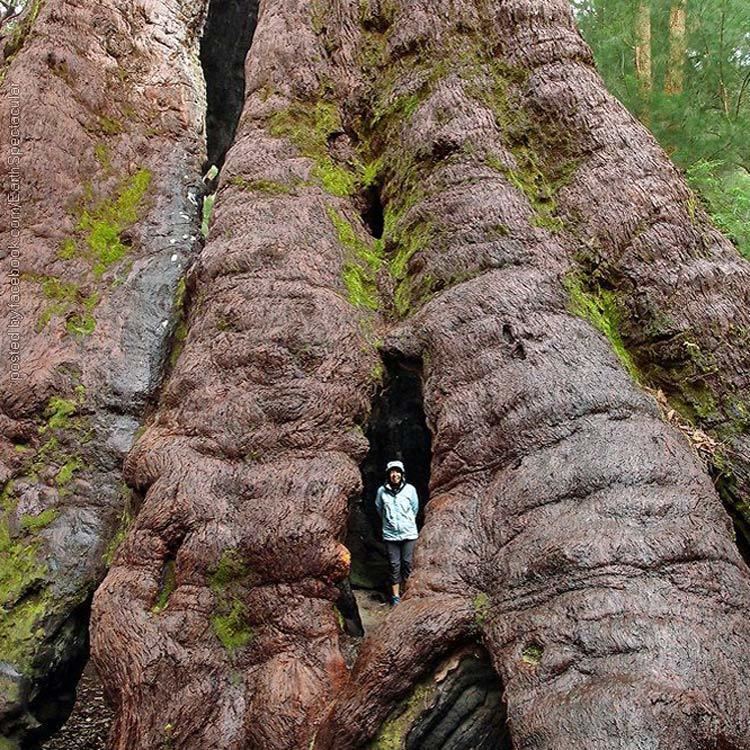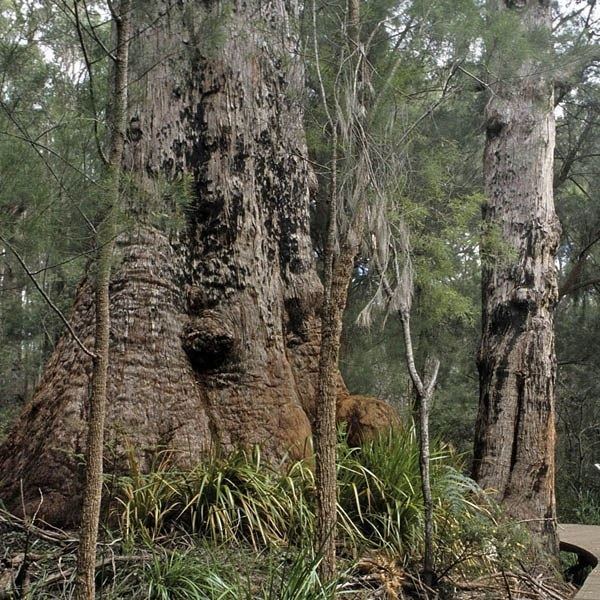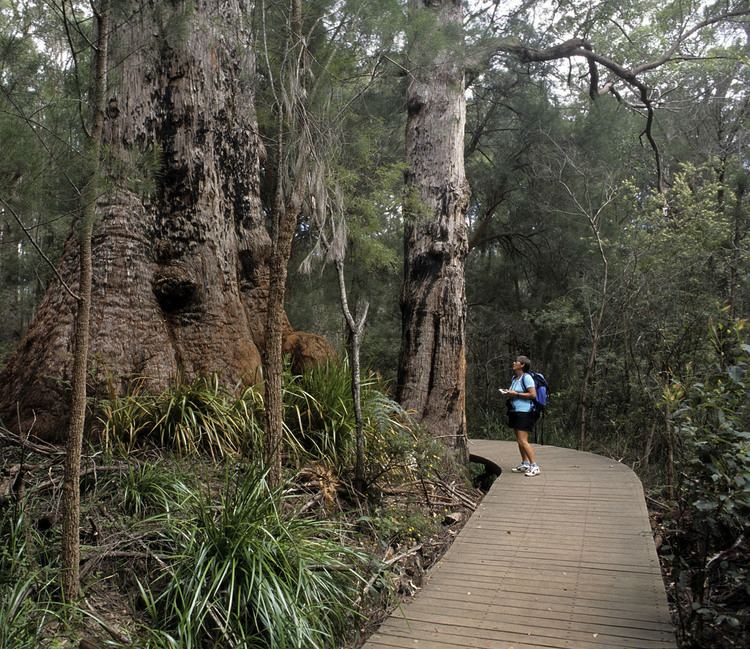Scientific name Eucalyptus jacksonii Rank Species | Genus Eucalyptus Higher classification Gum trees | |
 | ||
Similar Gum trees, Eucalyptus diversicolor, Eucalyptus patens, Corymbia calophylla, Eucalyptus cornuta | ||
Red tingle trees eucalyptus jacksonii
The Red Tingle (Eucalyptus jacksonii) of South West Western Australia is one of the tallest trees found in the state.
Contents

Description

The tree typically grows to a height of 8 to 55 metres (26 to 180 ft) and has rough, stringy and furrowed grey-brown or red-brown bark. It can have a circumference up to 24 metres (79 ft) round at the base and grow to a height of 75 m (246 ft). The tree can live for up to 400 years.
It has a dense compact crown that forms a heavy canopy.

The adult leaves are disjunct, glossy, green, thin, discolorous. The leaves have a lanceolate shape and are oblique or basally tapered. The lateral veins of the leaf are obscure, acute or obtuse.

The tree flowers between January and March producing a white blossom. Each conflorescence is simple and axillary with 3 to 7 flowered umbellasters. It s supported on peduncles that are terete or narrowly flattened. These later form globose fruits with a depressed disc and enclosed valves.
The trees often have shallow root systems and grow a buttressed base. Forest fires often act to hollow out the base of the trees creating a large cavity.
The Heartwood is deep pink to reddish-brown in colour with a green density of about 960 kg/m3, and air-dried density about 770 kg/m3.
Largest red tingle currently is Giant Tingle Tree in the Valley of Giants, Walpole-Nornalup National Park. This tree is approximately 400 years old, circumference at breast height is 22.3 m, height - 30 m. Forest fires have created enormous hollow where more than 100 people can fit inside.
The red tingle is often compared to the other two species - the Yellow tingle Eucalyptus guilfoylei and Rate's tingle Eucalyptus brevistylis are smaller. The Red tingle is more closely related to Rate's tingle both of which belong to the Eucalyptus subgenus.
Distribution
The distribution of the species has been shrinking due to climate change over millions of years. They are now found primarily in Walpole-Nornalup National Park and in a few isolated sites outside the park in the Walpole area at the juncture of the South West and Great Southern regions along the south coast of Western Australia where it grows on hillsides and in gullies in loamy soils.
The trees often occur with Eucalyptus marginata (Jarrah) andEucalyptus diversicolor (Karri) and Corymbia calophylla (Marri) trees. The Red tingle also can occur with Eucalyptus guilfoylei (Yellow tingle) and Eucalyptus brevistylis (Rate's tingle) and are the dominant species in the stands in which they occur.
Classification
The species was first described by the botanist Joseph Maiden in 1914 in the Journal and Proceedings of the Royal Society of New South Wales. Eucalyptus jacksonii is named after Sidney William Jackson, an Australian naturalist and ornithologist. The sample that was described by Maiden was collected by Jackson in 1912 between Nornalup Inlet and Irwin Inlet.
